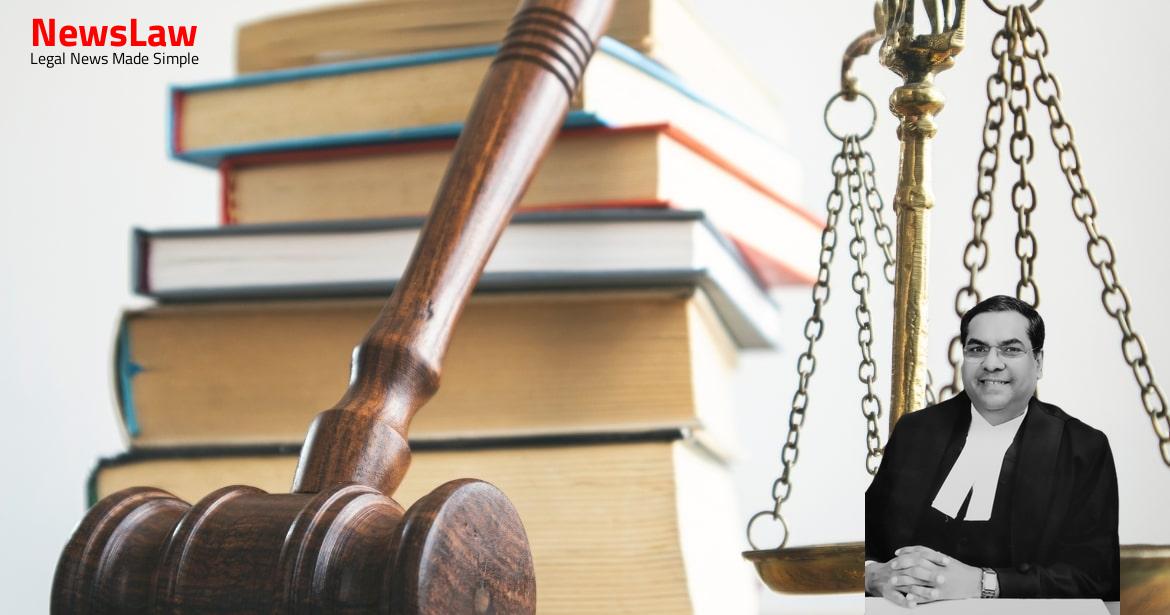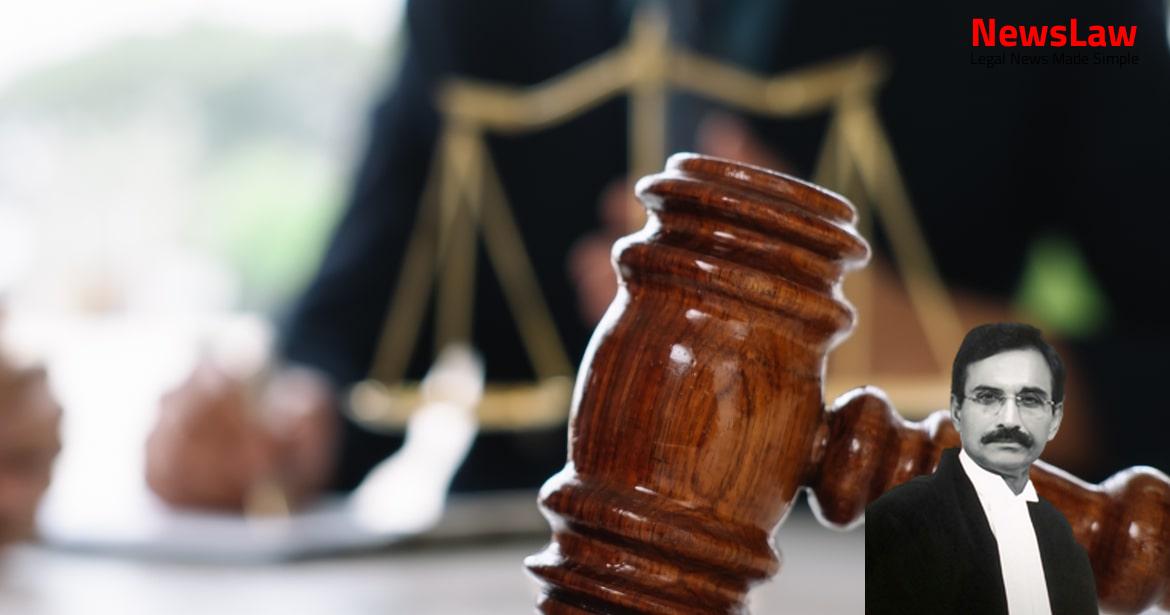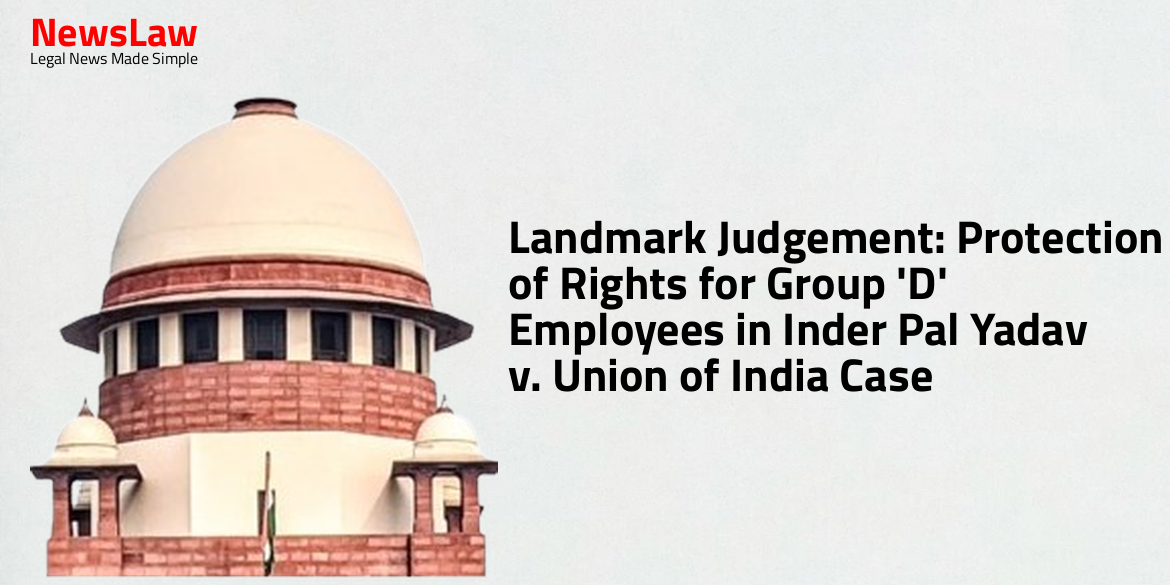Delve into the intricate legal analysis by the court regarding the rejection of the plaint based on the bar of limitation. Through a balanced approach focusing on justice rather than technicalities, the court quashes the decisions of lower courts, emphasizing the need for a clear cause of action. Follow this engaging read to understand the critical role of legal analysis in shaping court judgments.
Facts
- Leave granted.
- The appeal challenges the judgment and order of the High Court in R.S.A. No 391/2016.
- The High Court affirmed the decision of the trial Court in rejecting the plaint under Order VII Rule 11 of the CPC.
- The trial Court rejected the plaint under Order VII Rule 11(d) of the CPC on the basis of the bar of limitation, as it was filed beyond the prescribed period of three years from the date the right to sue accrued to the appellant in October, 2000.
- The appellant filed a suit on 23.2.2005 for rendition of true and correct accounts in relation to interest/commission charged by the respondent-Bank on the appellant’s current account.
- The suit also sought recovery of excess amount charged by the respondent-Bank for the period between 1.4.1997 and 31.12.2000.
- The appellant requested interest at the rate of 18% per annum on the excess amount charged, including interest pendente lite, realization of the amount, and future interest.
Also Read: Analysis of Legal Issues in Property Dispute Case
Analysis
- The appellant discovered that the respondents were charging interest/commission in an arbitrary manner in July 2000, leading to a series of letters and correspondence from the appellant demanding clarification and refund of the overcharged amount.
- The Assistant General Manager of the Regional Office responded to the appellant’s representation, indicating that the matter was under consideration.
- Subsequent letters and communications from the Bank, including a firm response from the Senior Manager in 2002 and advice to cease further correspondence in 2003, triggered the right to sue for the appellant.
- The appellant’s legal notices in 2003 and 2005 were responses to the Bank’s actions and refusals, solidifying the cause of action for filing the suit.
- The plaintiff’s belief that the Bank was processing their claim was shattered upon receipt of firm responses from Bank officials in 2002 and 2003.
- The Court emphasized the importance of considering the plaint as a whole in determining cause of action and the bar of limitation for filing the suit.
- Order 7 Rule 11 of the CPC provides the power to reject a plaint if conditions mentioned in the provision are met.
- The power under Order 7 Rule 11 can be exercised by the Court at any stage of the suit.
- When considering an application under Order 7 Rule 11, the court must focus on the averments in the plaint, and the plea in the defendant’s written statement is irrelevant at that stage.
- The trial court can reject the plaint if it is vexatious, meritless, or does not disclose a clear right to sue.
- Cases governed by different Articles of the Limitation Act have specific time frames for filing suits, and the right to sue accrues at different points in time.
- The duty of the trial court is to scrutinize the averments in the plaint to determine if a cause of action exists.
- The court must reject the plaint if it is barred by any law, including limitation, as per Order 7 Rule 11.
- The court’s primary focus should be on justice rather than technicalities, and a balanced approach is necessary when considering rejection of plaints.
- Appellant’s argument to apply Article 113 of the 1963 Act was noted and rejected
- Exposition related to the decision in Kandimalla Raghavaiah case, interpreting Section 24A of the Consumer Protection Act, 1986
- Court’s observation on the cause of action arising from the fire incident in the godown on 22/23.3.1988
- The decisions of the trial Court, first appellate Court, and the High Court to reject the plaint under Order VII Rule 11(d) of the CPC are not sustainable.
- The decisions are quashed and set aside in the present case.
Also Read: Legal Analysis on Levy of Customs Duty on Non-Excisable Goods Sold in Domestic Tariff Area by an EOU
Decision
- The pending interlocutory applications have been disposed of.
- The impugned judgment and orders of the trial Court, first appellate Court, and High Court in second appeal are set aside.
- The plaint is restored to the file of the trial Court for disposal on the same terms as indicated in a companion appeal.
- No costs are awarded.
- The defendants denied the averments relating to excess charges and stated the interest was charged as per Circulars.
- The cause of action for the suit accrued on various dates when letters were sent requesting refund and clarification on interest calculation.
- All contentions including limitation issue to be decided based on pleadings and evidence produced by the parties.
- Pending interlocutory applications have been disposed of.
- No costs are awarded.
- The appeal succeeds and the plaint is restored to the trial Court for further proceedings.
Also Read: Land Acquisition Notification Process: Legal Analysis
Case Title: M/S. SHAKTI BHOG FOOD INDUSTRIES LTD. Vs. THE CENTRAL BANK OF INDIA (2020 INSC 413)
Case Number: C.A. No.-002514-002514 / 2020



